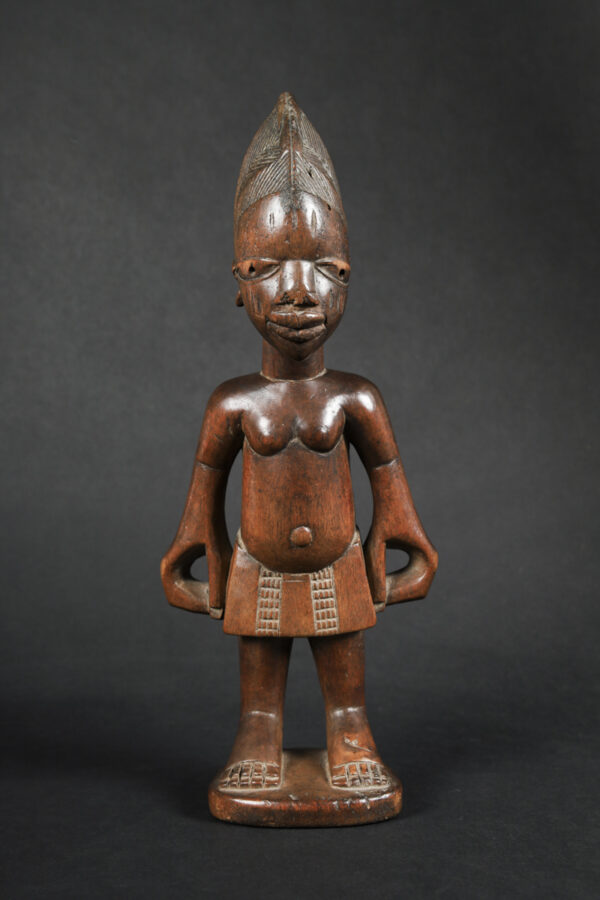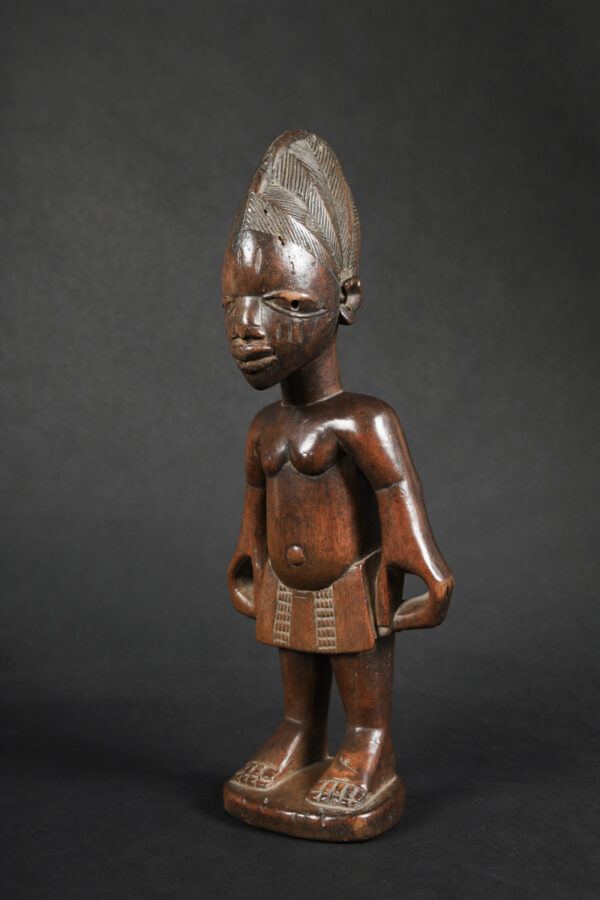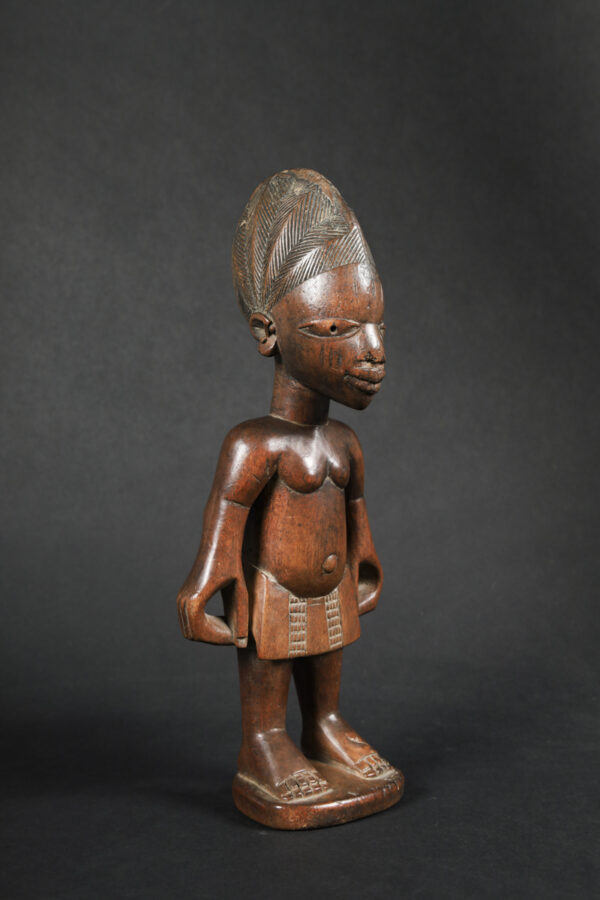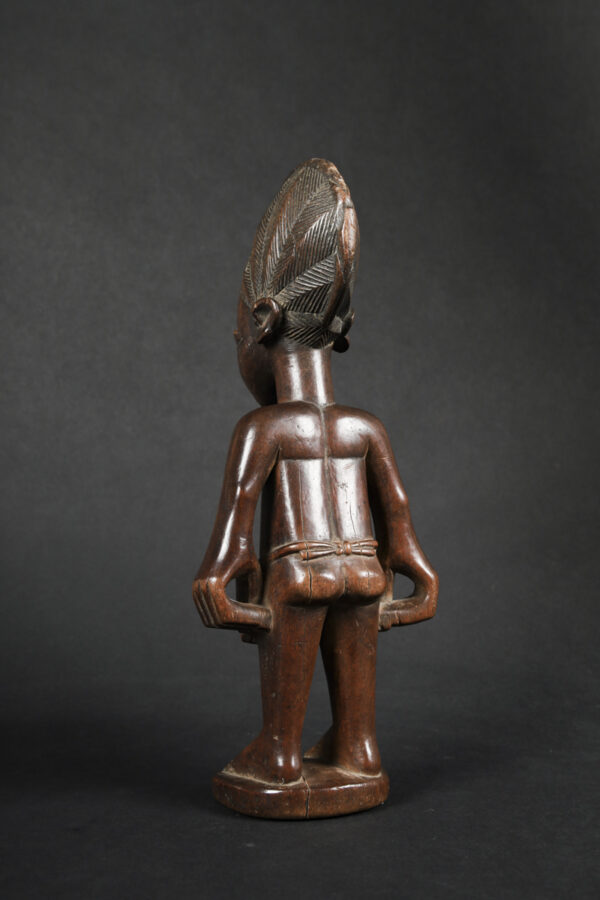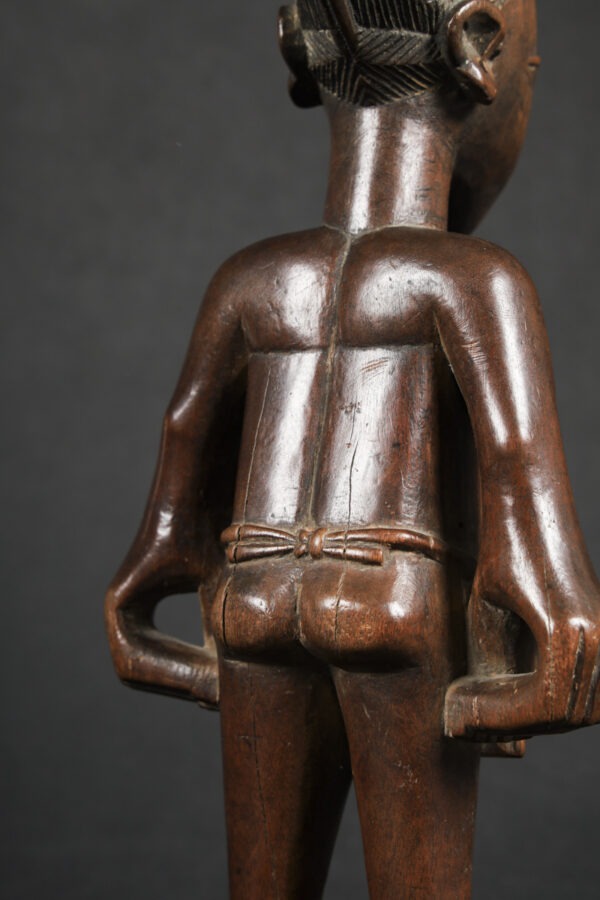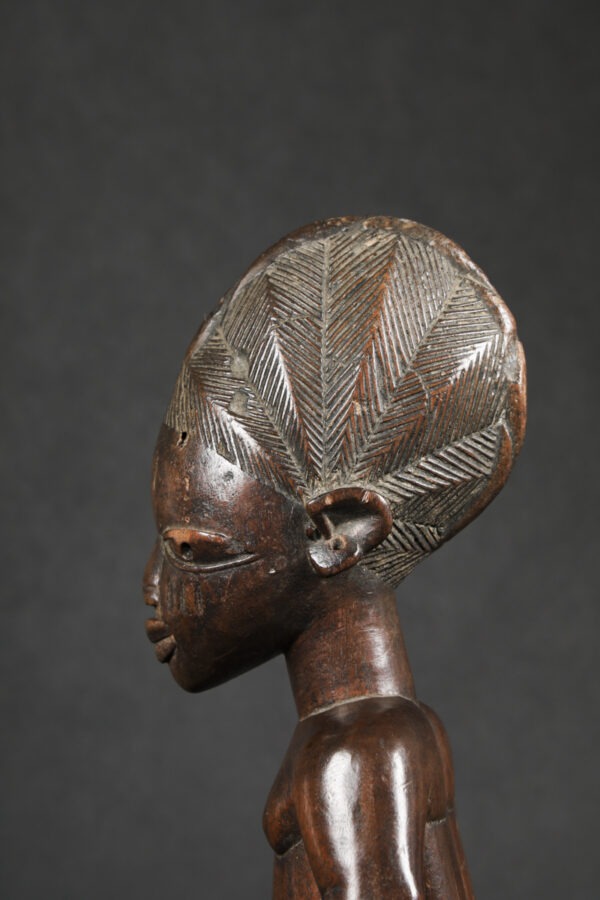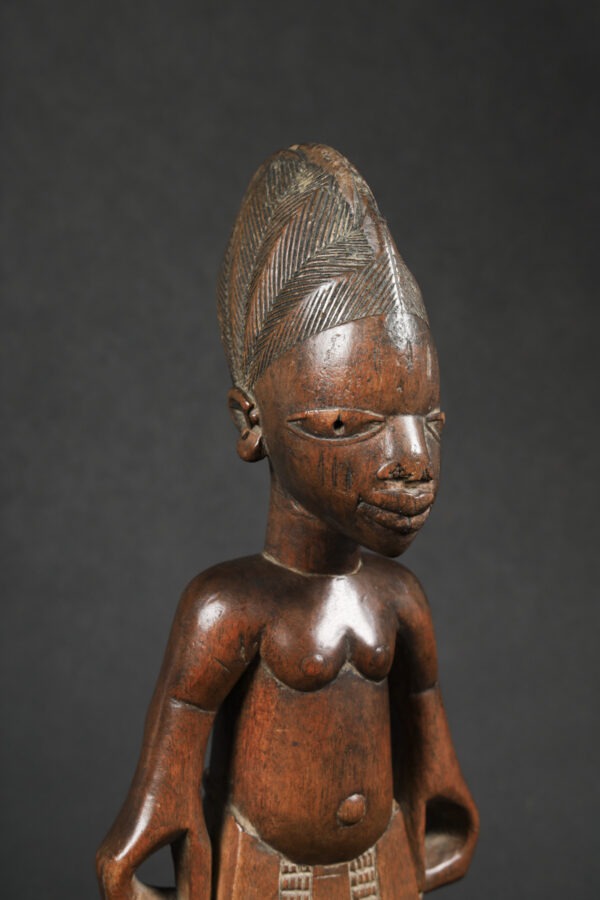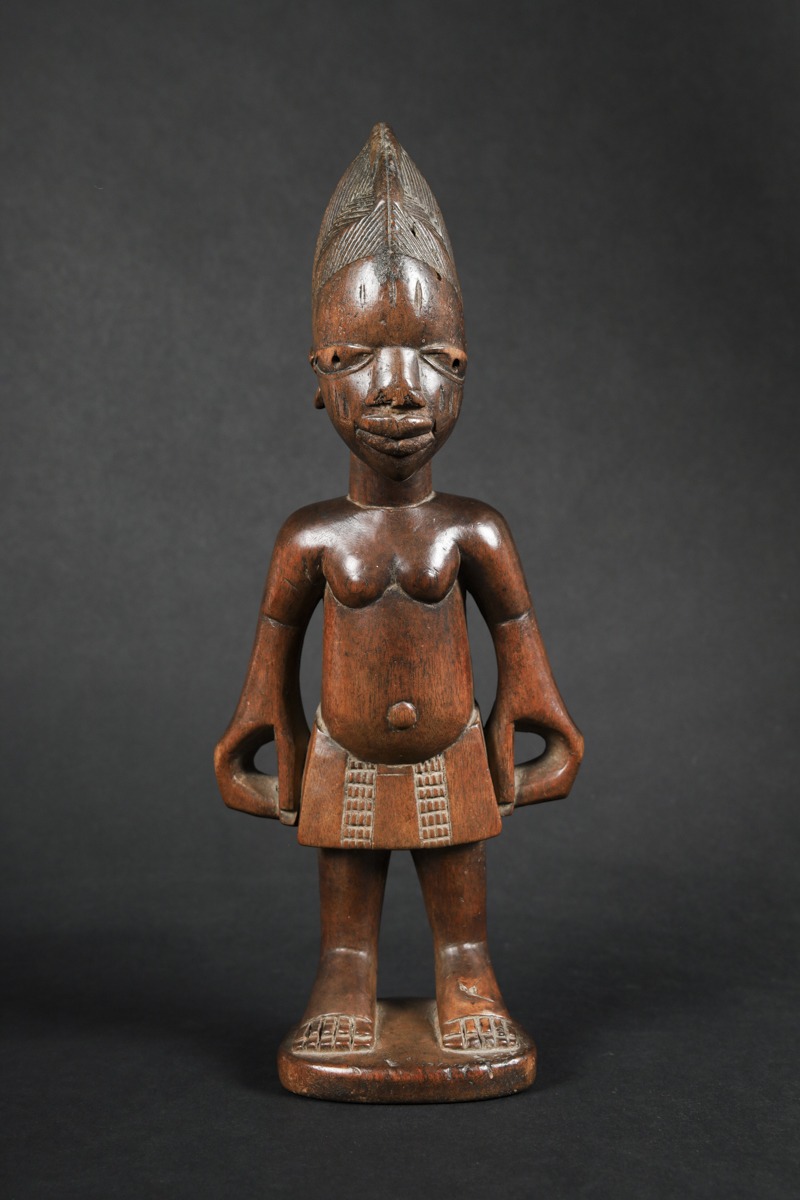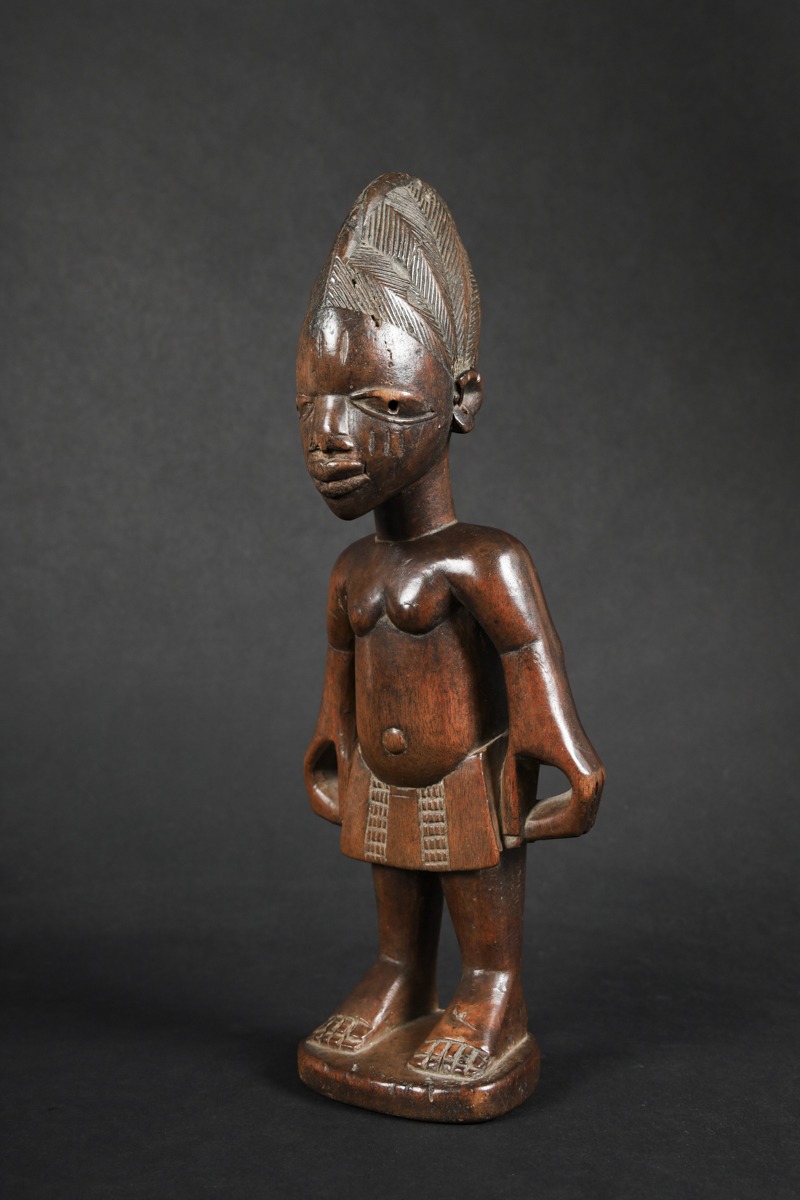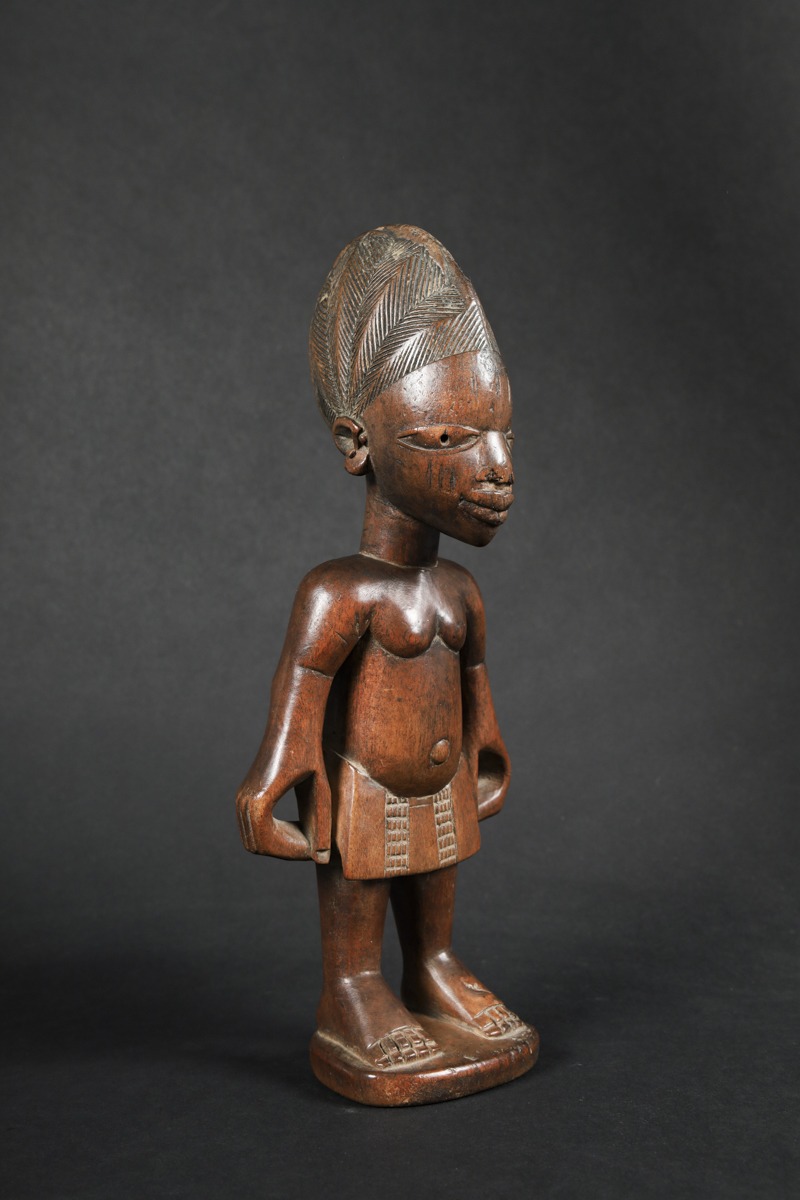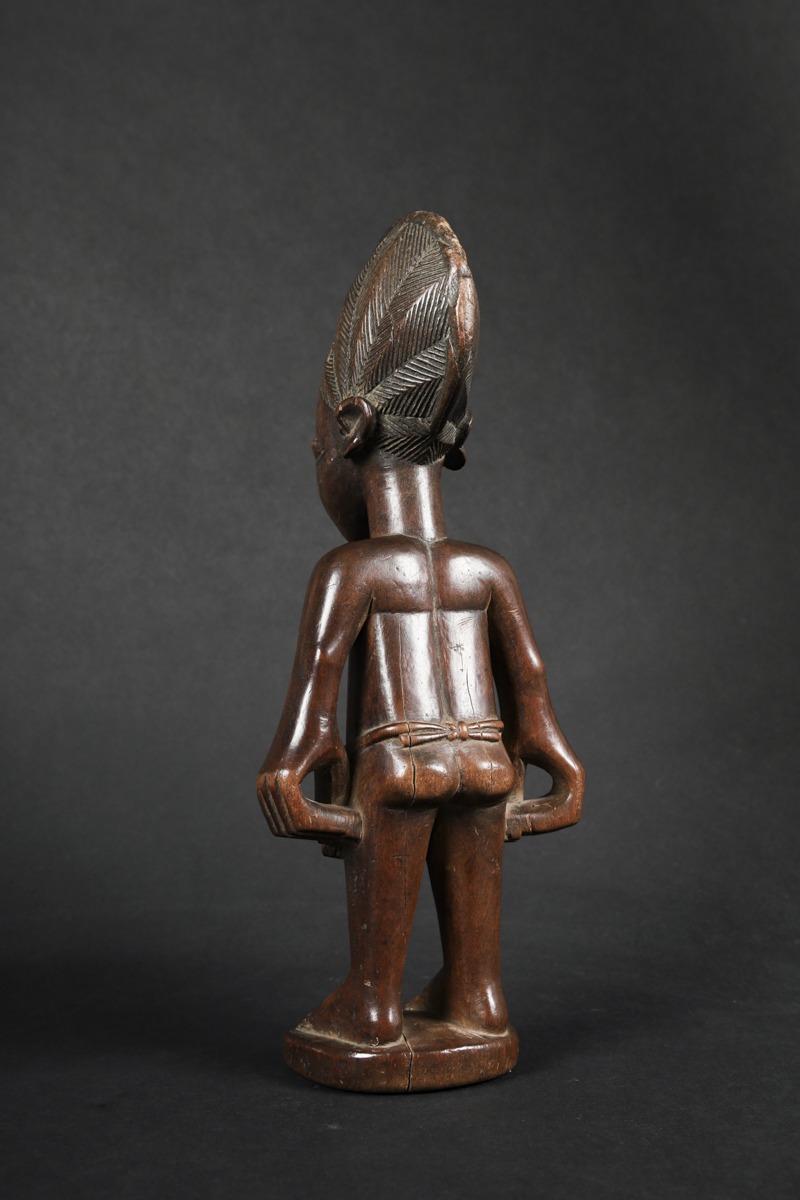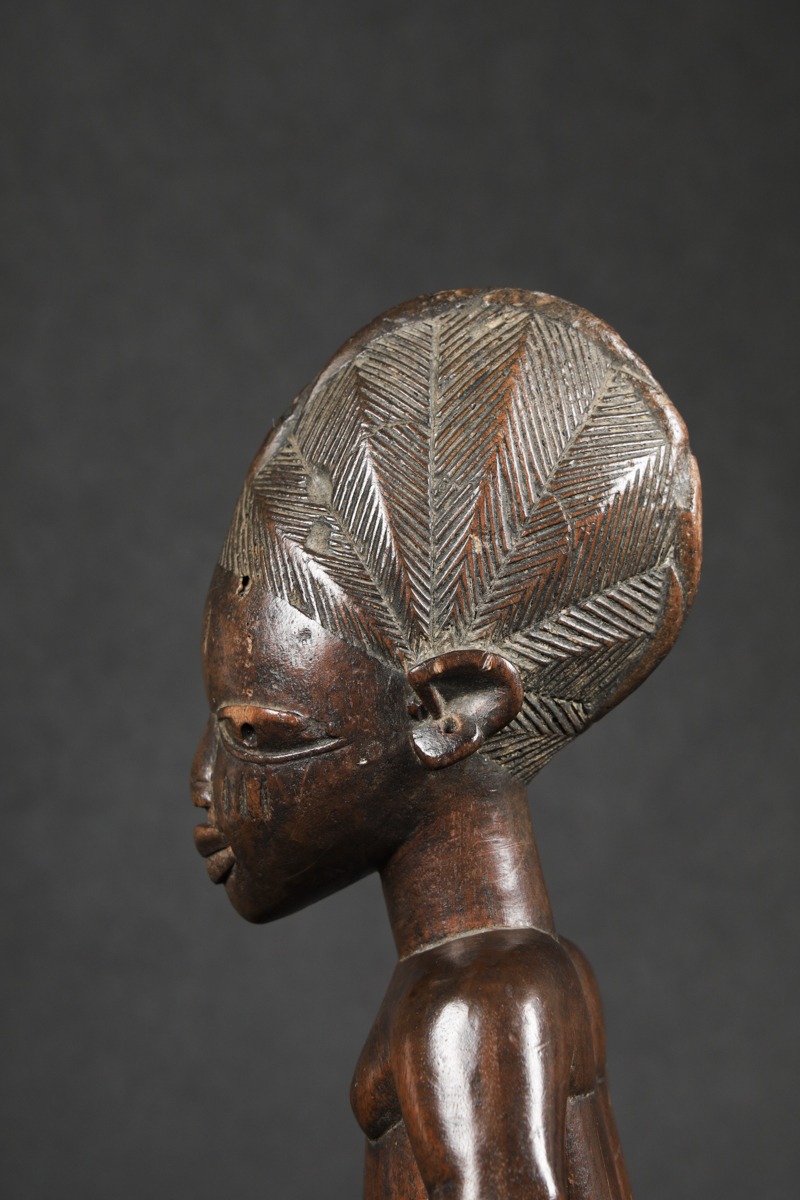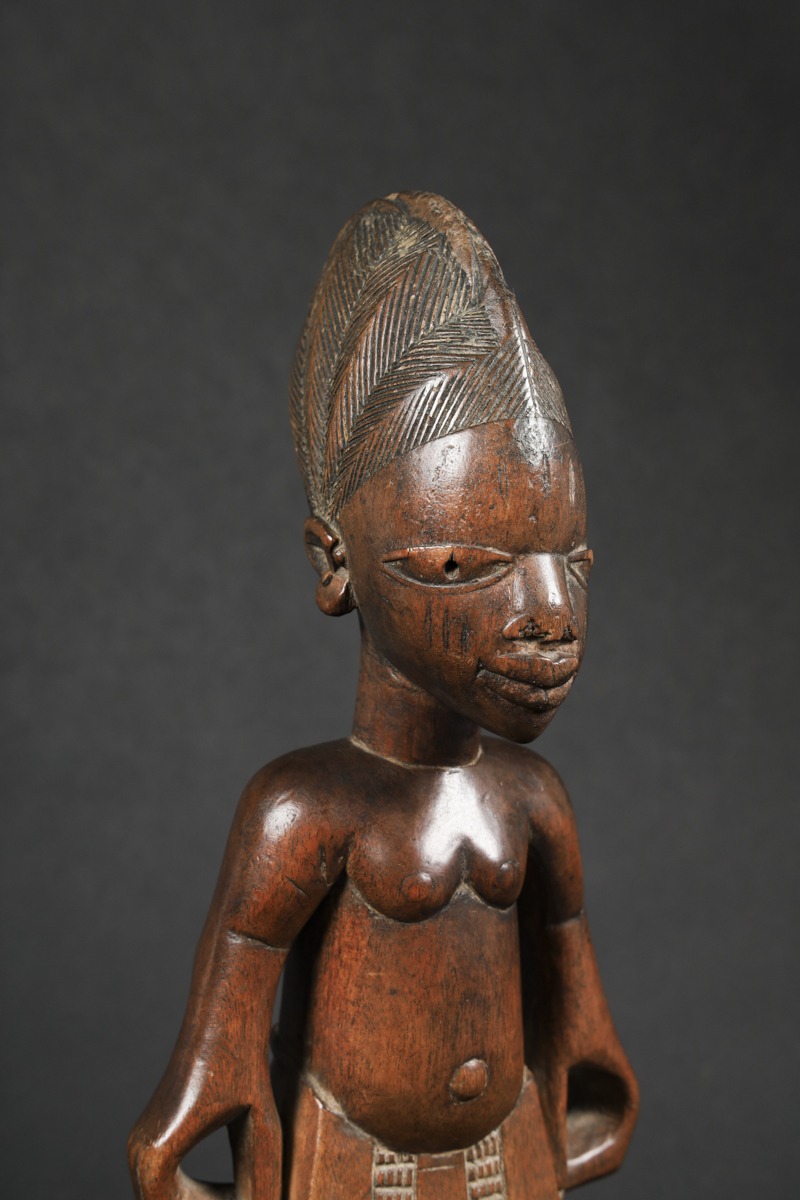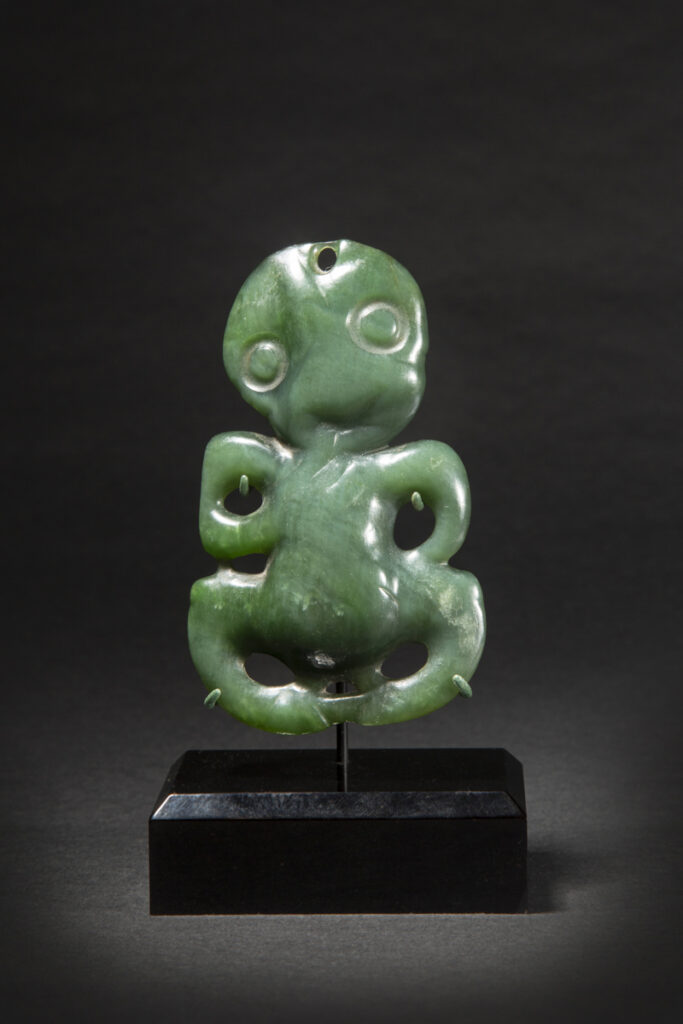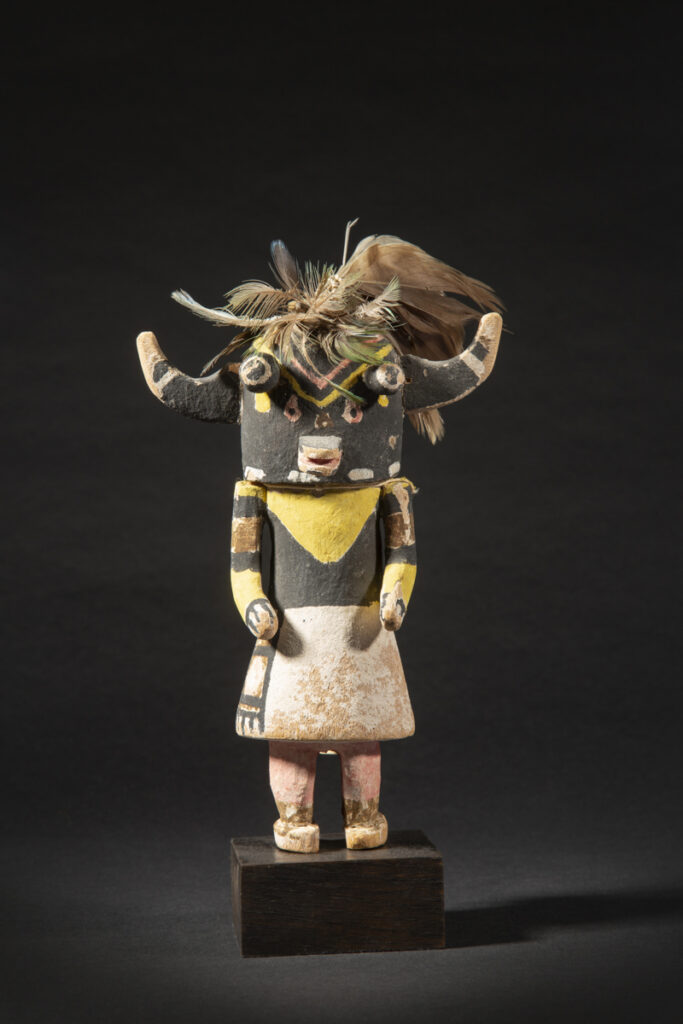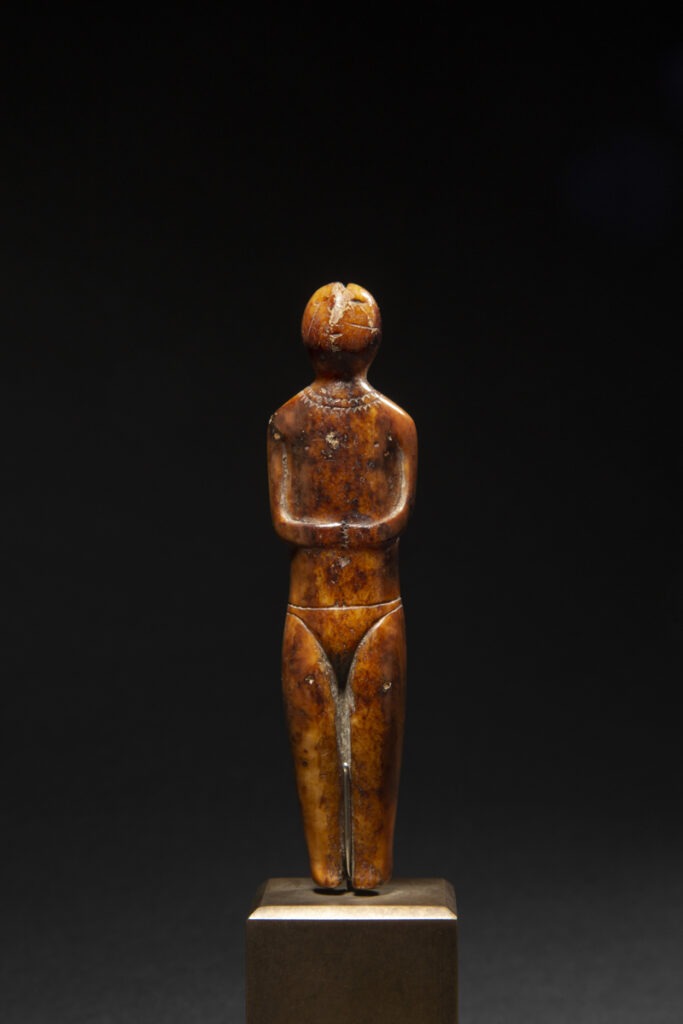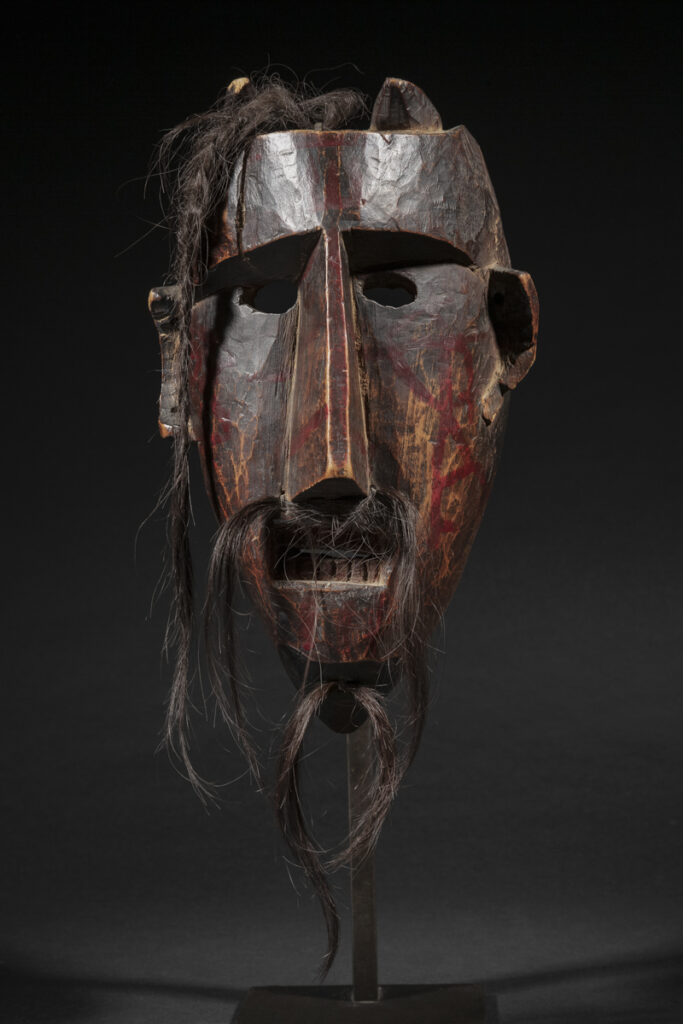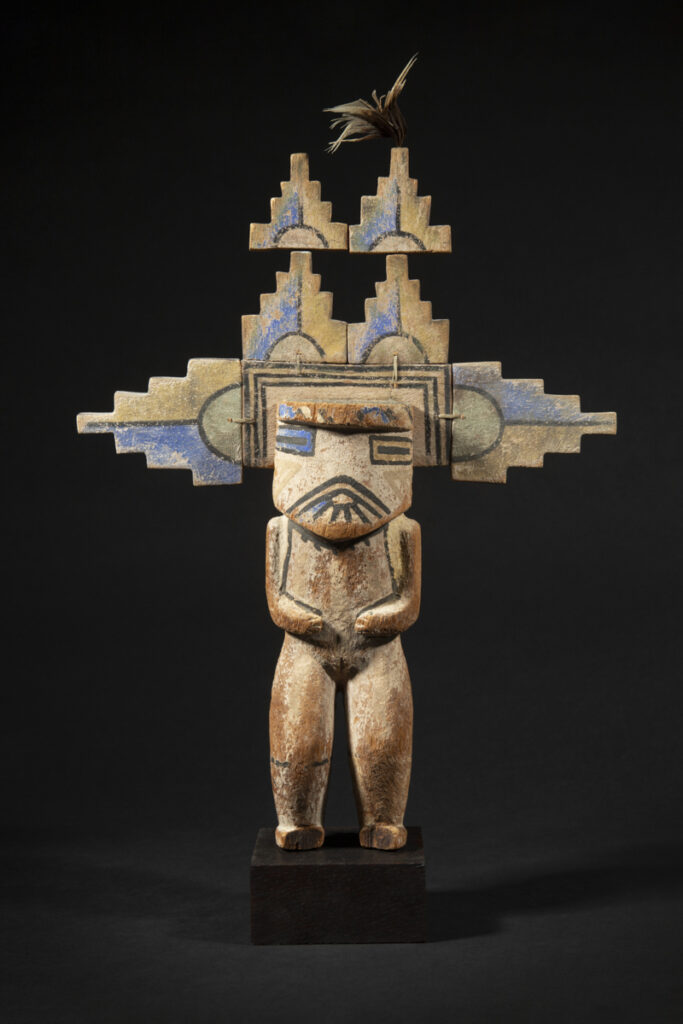Africa | Nigeria
Ibeji
Nigeria
Ere Ibeji twin figure
Yoruba
Artist Akiode (1875-1936) – son of Eshubiyi
Abeokuta style
Egba area – Nigeria
Carved wood and pigments
Early 20th century
Height: 25 cm – 9 ¾ in.
Provenance
Ex collection Ernest Ohly, Berkeley Galleries, London, 1961
Ex collection Peter & Veena Schnell – Zurich, 1961-2004
Ex Sotheby’s Paris, 15 June 2004, lot 49
Ex collection of the city of Saint-Cyprien, France, 2004-2009
Ex Million & Associés, 23 January 2019, lot 18
Akiode Ibeji 25 cm / Galerie Flak
Price on request
The statuettes linked to twin worship, are called ere ibeji in the Yoruba language: ere signifying a sacred image, ibi born and eji a double. Symbols of prestige, wealth and fecundity, ere ibeji figures also guaranteed the perpetuation of future generations. These
effigies of ancestors were an integral part of everyday activities, punctuating the family life of the Yoruba.
Subject to very codified rituals, ere ibeji figures were pampered, with their care including feeding, washing and oiling.
They were considered to be living beings, a reincarnation of ancestor-twins. Representations always showed them at the peak of their strength and power in adulthood.
effigies of ancestors were an integral part of everyday activities, punctuating the family life of the Yoruba.
Subject to very codified rituals, ere ibeji figures were pampered, with their care including feeding, washing and oiling.
They were considered to be living beings, a reincarnation of ancestor-twins. Representations always showed them at the peak of their strength and power in adulthood.
Explore the entire collection
